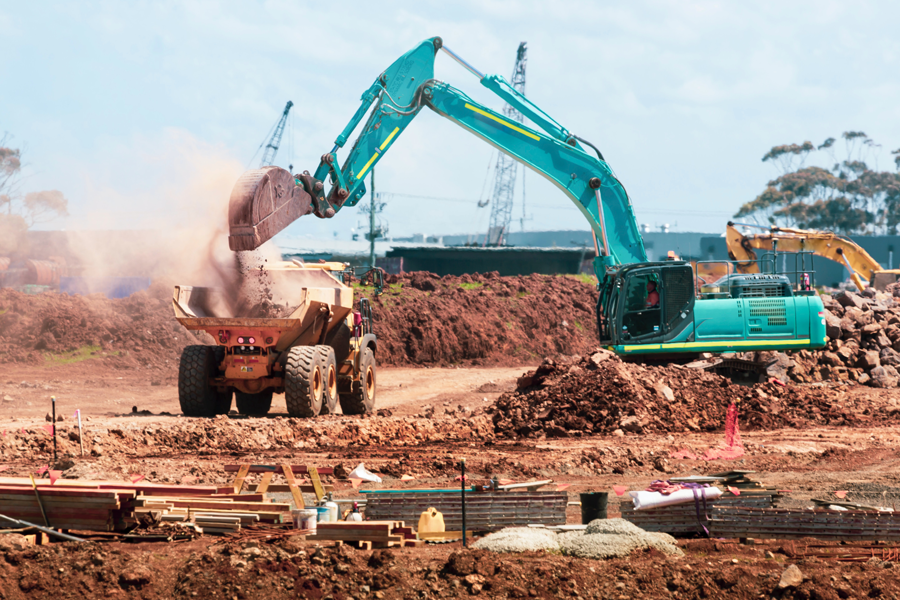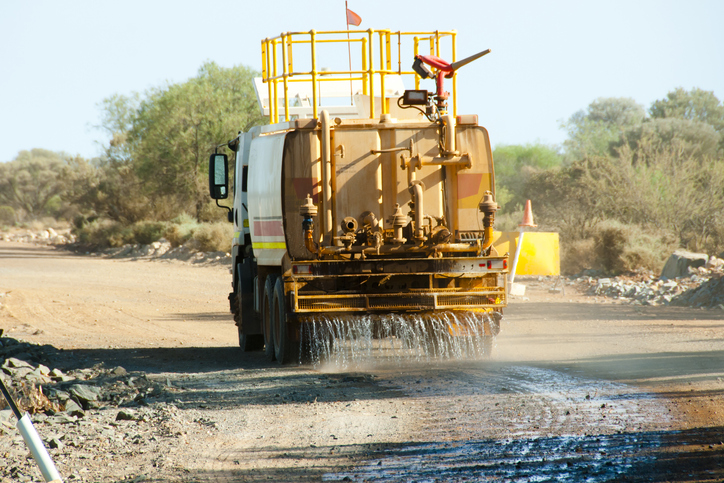Top 3 ways to control dust on site

Control dust on site with these 3 methods
Dust control is a major issue on work sites across Australia. In our dry and unforgiving climate, it is common for sites to experience long periods without rain, making surfaces, stockpiles and access roads very dry and dusty.
Airborne dust particles can come from a range of different sources, including cleared or open land, stockpiles of soil and clean fill, vehicle traffic on unsealed roads, processing operations such as stonemasonry and concrete cutting, rubbish piles and demolition work.
Common dust-generating activities:
- Demolition work
- Earthmoving and excavation
- Grinding or cutting bricks and masonry
- Concrete cutting and drilling
- Transfering and tipping waste
- Vehicles driving on unsealed roads
- Crushing and screening aggregates
- Soil or material stockpiles
To remain compliant with environmental regulations, it’s important to take steps to control dust on your building site. Generating dust on a construction site is considered as air pollution, and keeping it in check will not only ensure that you keep your workers safe and protected against respiratory safety hazards, but also keep surrounding residents happy.
Here are three different ways that you can control dust on your construction site.
Install, shade cloth, silt fencing and banner mesh products
Banner mesh is a type of dust screen fabric that comes on a roll, and it is typically made from tightly woven polypropylene mesh. Fixed to temporary site fencing with cable ties, it provides a cheap and easy way to cover large vertical areas to keep dust in check.
For it to be really effective, it’s important to install it correctly and keep it maintained. If an area of dust barrier or banner mesh falls off the fence or gets ripped during a storm, for example, it should be replaced to ensure it is still doing its job.
Banner mesh is available in different types to suit regular and windy sites. Both provide good privacy with the convenience of a temporary dust screen. Plus, banner mesh can be printed with large format logos and images, adding strong branding to your site.
Silt fencing is another way to keep ground-level dust within the site. Silt fences don’t prevent dust from arising, but they do help to keep it contained. Silt and sediment are relatively stable when moist but if left to dry out, it can easily be blown away or into stormwater drains. Using a silt fence or sedifence helps to stop erosion around the edges of your site, which can contribute to dust issues.
 Use a dust suppression formula on large areas
Use a dust suppression formula on large areas
For sites that have large exposed mounds of excavated soil or clean fill located on the premises, it’s important to cover or contain it. Mounds of soil can be a big contributor to windblown dust, and therefore covering them with a geotextile ‘blanket’ can be a good solution.
However, in some cases, the areas of exposed soil are too great to be covered. This is where a dust suppression product can be useful. A dust control formula such as Road-X2 is an environmentally safe and biodegradable product that is diluted in water and provides 3 – 6 months of effective dust control. This can be an ideal way to suppress dust on dirt roads, open areas of your site, dirt roads and access tracks and more.
Dust control products can also be used to minimise dust from on-site traffic movements. Where sealing access tracks is not practical, it is easy for vehicles to pick up dirt and dust, so a wheel wash or vehicle washdown zone is common for vehicles exiting the site or moving to a clean area. Using dust suppression formulas in this application can be much more effective than water alone.
Finish with erosion control products like jute, coir and mulch
One of the best and most permanent ways to control dust and erosion on a construction site is by introducing erosion control products and vegetation.
Natural products such as jute matting and jute mesh cover and protect loose and exposed soil. They help stop erosion from wind, rain and strong weather and prevent surface evaporation which can dry out the soil and turn it to dust.
The eventual growth of vegetation adds additional stability to open areas, keeping dust under control for the long term.
Find out more
Stockpiles should be covered or treated with a dust suppression product. For more information check with your local environmental authority. An example of the NSW Department of Planning, Industry and Environment’s guidance note on air quality on construction sites can be found at their website.
To get a fast quote on dust control products for your construction site, get in touch with Jaybro.
 Sign In
Sign In 

